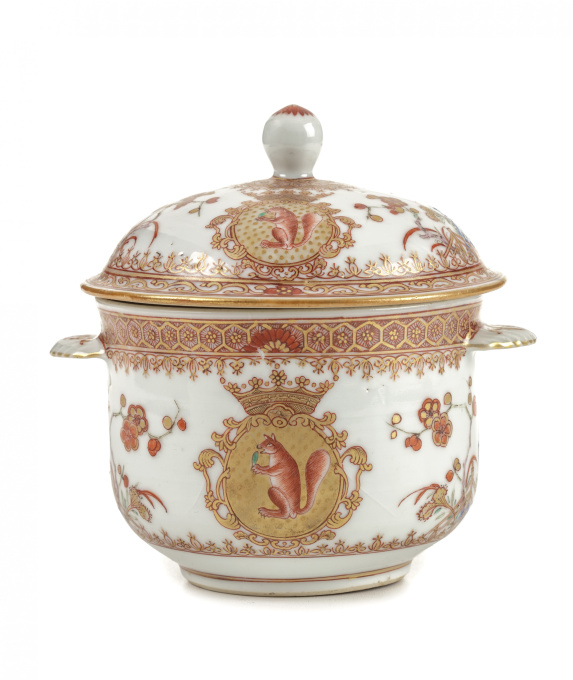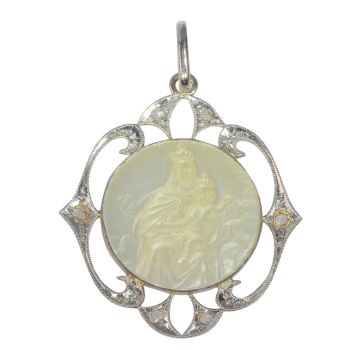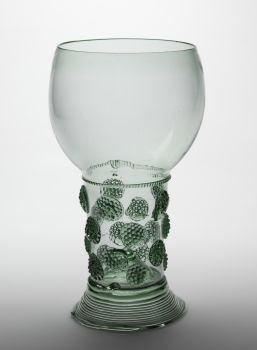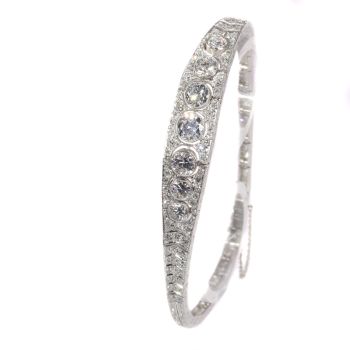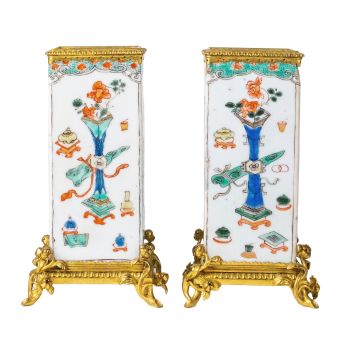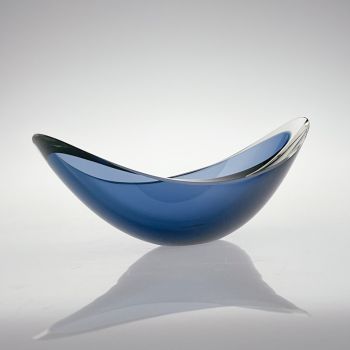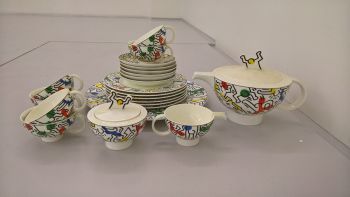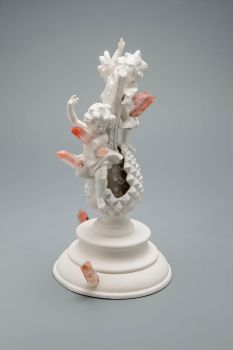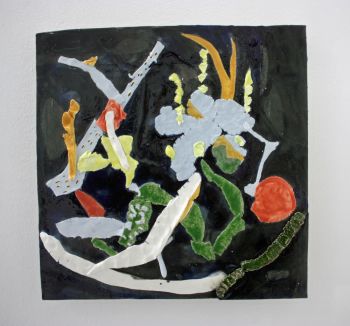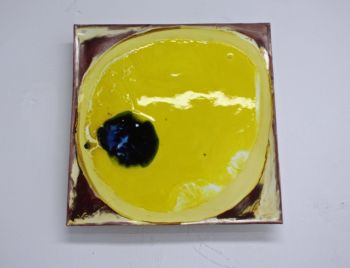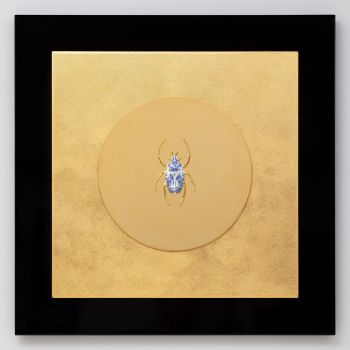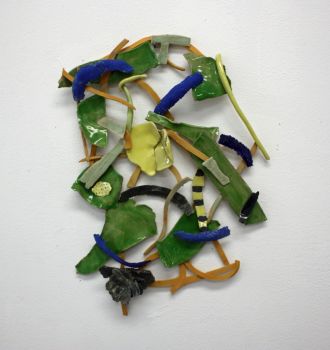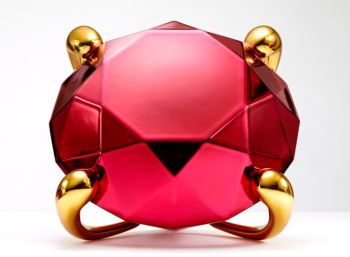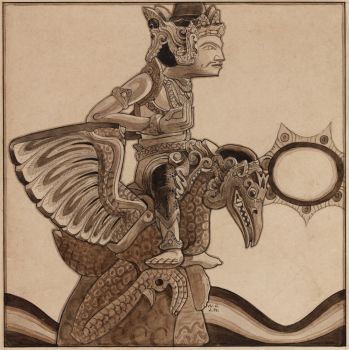A CHINESE EXPORT PORCELAIN 'SICHTERMAN' SUGAR BOWL AND COVER, KANDIJPOT 1730 - 1735
Unknown artist
PorcelainChinese porcelain
13 ⨯ 11 cm
Currently unavailable via Gallerease
Zebregs & Röell - Fine Art - Antiques
- About the artworkA CHINESE EXPORT PORCELAIN 'SICHTERMAN' SUGAR BOWL AND COVER, KANDIJPOT
Yongzheng period, circa 1730-1735
Both the bowl and the lid decorated in iron-red, blue, yellow and green enamels and gold, showing a squirrel in profile eating a nut, surrounded by bamboo and floral sprays, the bowl restored.
W. 13.7 x H. 11 cm
Note:
The shape of this Chine de commande bowl and cover copies a European model sugar bowl and belonged probably to one of the first of altogether eight services ordered by Jan Albert Sichterman (1692-1764), and sent to the Netherlands from about 1730 onwards on board Dutch East Indiamen, but also on Swedish, English and Ostend ships.
Jan Albert Sichterman was the richest man of Groningen after his return in 1744 from the East Indies and was called “de Koning van Groningen”.
After a duel for which Jan Albert, as a soldier, would probably have been convicted in a court-martial, he had to escape the country and in 1716 sailed for the East Indies. There he had a brilliant career in the Dutch factories on the Ganges river in Bengal. First in Houghly from 1717 till 1723, then as head of the factory in Cassimbasar from 1725 till 1734 and finally as Director of Bengal in Houghly till 1744. In 1721 he had married Sibylla Volkera Sadelijn (1699-1781) in Houghly, daughter of Jacob Sadelijn who was Jan Albert’s predecessor as Director of Bengal, and Anna Françoise Pelgrom, daughter of Jacob Pelgrom (see item 39), Director of Bengal from 1701 till 1705. Jan Albert set up a silk and cotton weaving mill and had a significant impact on the trade of cotton and silk fabrics to the Netherlands. However, his fortune he made in private (illegal) trade and smuggling.
After his death in 1764, most of his belongings were auctioned including a total of over 4000 pieces of porcelain, including probably about 400 pieces of armorial porcelain.
- About the artist
It might happen that an artist or maker is unknown.
Some works are not to be determined by whom it is made or it is made by (a group of) craftsmen. Examples are statues from the Ancient Time, furniture, mirroirs, or signatures that are not clear or readible but as well some works are not signed at all.
As well you can find the following description:
•“Attributed to ….” In their opinion probably a work by the artist, at least in part
•“Studio of ….” or “Workshop of” In their opinion a work executed in the studio or workshop of the artist, possibly under his supervision
•“Circle of ….” In their opinion a work of the period of the artist showing his influence, closely associated with the artist but not necessarily his pupil
•“Style of ….” or “Follower of ….” In their opinion a work executed in the artist’s style but not necessarily by a pupil; may be contemporary or nearly contemporary
•“Manner of ….” In their opinion a work in the style of the artist but of a later date
•“After ….” In their opinion a copy (of any date) of a work of the artist
•“Signed…”, “Dated….” or “Inscribed” In their opinion the work has been signed/dated/inscribed by the artist. The addition of a question mark indicates an element of doubt
•"With signature ….”, “With date ….”, “With inscription….” or “Bears signature/date/inscription” in their opinion the signature/ date/ inscription has been added by someone other than the artist
Are you interested in buying this artwork?
Artwork details
Related artworks
Unknown artist
Antique Russian wooden icon: Archangel Gabrielearly 17th
Price on requestKunsthandel H.W.C. Dullaert Icons
1 - 4 / 12Unknown artist
Series of 6 Chinese cups and saucers (Yongzheng period)1722 - 1735
Price on requestKuipers Kunst & Antiek
Unknown artist
Series of 6 Chinese cups and saucers (Yongzheng period)1722 - 1735
Price on requestKuipers Kunst & Antiek
1 - 4 / 13- 1 - 4 / 24
Unknown artist
An Indian silver filigree casket with hinged coverearly 20th
Price on requestZebregs & Röell - Fine Art - Antiques
Unknown artist
A COLLECTION OF FOUR SRI LANKAN IVORY BIBLE BOXES18th century
Price on requestZebregs & Röell - Fine Art - Antiques
Unknown artist
A large Japanese Imari porcelain 'VOC Groningen' dish1800 - 1925
Price on requestZebregs & Röell - Fine Art - Antiques
Unknown artist
Japanese transition-style lacquer coffer 1640 - 1650
Price on requestZebregs & Röell - Fine Art - Antiques
Unknown artist
Dutchmen in Miniature18th century
Price on requestZebregs & Röell - Fine Art - Antiques
1 - 4 / 24Unknown artist
Series of 6 Chinese cups and saucers (Yongzheng period)1722 - 1735
Price on requestKuipers Kunst & Antiek
Unknown artist
A large Japanese Imari porcelain 'VOC Groningen' dish1800 - 1925
Price on requestZebregs & Röell - Fine Art - Antiques
1 - 4 / 24Unknown artist
A GILT-SILVER SRI LANKAN DOCUMENT SCROLL CONTAINER 19th century
Price on requestZebregs & Röell - Fine Art - Antiques
Unknown artist
A JAPANESE MODEL OF A NORIMONO, A PALANQUIN1650 - 1700
Price on requestZebregs & Röell - Fine Art - Antiques
Unknown artist
A RARE LARGE JAPANESE LACQUERED LEATHER TELESCOPE1750 - 1800
Price on requestZebregs & Röell - Fine Art - Antiques
1 - 4 / 12

